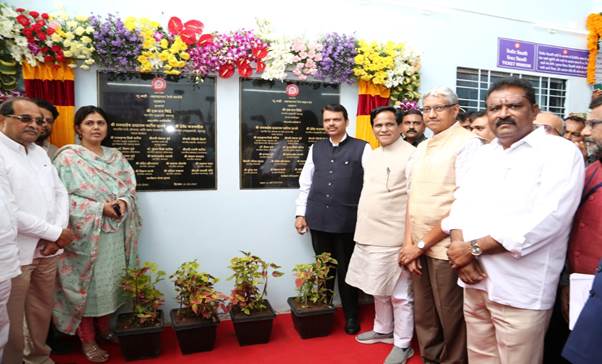Others
BHARATMALA
प्रविष्टि तिथि:
09 NOV 2021 14:46 PM
1. Introduction
India has about 62.16 lakh kilometres of road network, which is the second largest in the world in terms of length. It was important to re-define road development and have a macro approach while planning expansion of the national highways network. Hence, a new umbrella programme named Bharatmala Pariyojana was launched underMinistry of Road Transport and Highways with the primary focus of optimizing the efficiency of movement of goods and people across the country.
2. Need for the Umbrella Scheme
- Inadequacy in Optimization of National Highway network Road network due to resource constraints and lack of a national plan
- Lack of integrated planning in theconnectivity of major corridors and ports with hinterland
- Presence of Congestion Points, with multiple points of local congestion present even on already developed corridors
- Lack of accident response infrastructure
3. Salient features of the Project
Bharatmala focuses on enhanced effectiveness of already built infrastructure, multi-modal integration, bridging infrastructure gaps for seamless movement and integrating National and Economic Corridors. There are six key features of the programme:
- Economic Corridors: Integrating the economic corridors facilitates larger connectedness between economically important production and consumption centers.
- Inter-corridor and Feeder routes:This would ensure first mile and last mile connectivity.
- National Corridor Efficiency Improvement: Through this, the greater actionable goal is to undertake lane expansion and decongestion of existing National Corridors.
- Border and International connectivity roads: Better border road infrastructure would ensure greater maneuverability, while also boosting trade with neighbouring countries.
- Coastal and Port connectivity roads: Port-led economic development is further boosted through connectivity to coastal areas, encouraging both tourism and industrial development.
- Green-field Expressways: Expressways have higher traffic configuration and choke points would benefit from green-field expressways.

4. Outcomes
- Road safety audits were conducted for 32,971 km till FY20 and an additional length of 40,000 km is targeted till FY24. 5785 blackspots were identified for removal and rectification as a permanent measure to reduce road accidents.
5. Completed projects
- Eastern Peripheral Expressway was completed in 500 working days against average of 910 days.It is the first expressway in the country with solar power. It is estimated to be diverting more than 50,000 trucks away from Delhi daily.
- Delhi-Meerut Expressway:Length of Project Road is 82 km with total capital cost of Rs. 8346 crores; this project reduced travel time between the economic belt of Meerut and Delhi from 2.5 hours to 50 minutes.
- Narmada Bridge Project Length: The project reduced congestion in the important Golden Quadrilateral Corridor between Delhi and Mumbai.
- Chenani – Nashri Tunnel: The project reduced the distance between Jammu and Srinagar on NH1 by 29 km, leading to a time saving of 1 hour 30 mins and fuel savings of approximately INR 27 Lakhs per day.
- Dhaula-Sadia Bridge: The project provided direct connectivity between eastern Assam and Arunachal Pradesh and has facilitated numerous hydro power projects coming up in the State of Arunachal Pradesh.
- Other major completed projects include Chambal Bridge, New Brahmaputra Bridge, Dibang- Lohit River Bridge and Babatpur-Varanasi Project, among others.
6. Major Ongoing Projects include:
- Delhi-Mumbai Expressway
- Zojila Tunnel
- Kosi Bridge in Bihar
- MG Setu in Bihar
- Vikramshila Bridge on NH-131B
- Nechipu-Hoj in Arunachal Pradesh
Source: PIB E-Booklet on Bharatmala
AG/SA/JARU-13-02-0026-091121/FACTSHEET
(तथ्य सामग्री आईडी: 148574)
आगंतुक पटल : 1597
Provide suggestions / comments